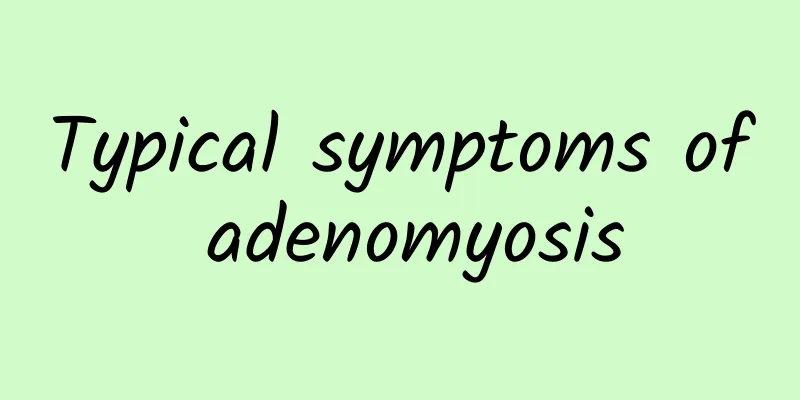Typical symptoms of adenomyosis

|
Typical symptoms of adenomyosis include progressively worsening dysmenorrhea, increased menstrual flow, and long-term abdominal pain. If these symptoms occur, it is recommended to seek medical attention as soon as possible and obtain a clear diagnosis through B-ultrasound or MRI. Adenomyosis is a chronic disease caused by the invasion of endometrial glands and stroma into the myometrium, and is common in women aged 30-50. Dysmenorrhea is the most significant manifestation, usually secondary dysmenorrhea that is difficult to relieve, and the pain gradually worsens as the disease progresses, and may spread to the lower back. Increased menstrual flow is often accompanied by prolonged menstruation, and some patients may also experience irregular bleeding before and after menstruation. Some patients may continue to feel bloating or pain in the lower abdomen, especially after sexual intercourse. If the course of the disease is long, it may also cause anemia, fatigue and other systemic discomfort symptoms, affecting the quality of life. To relieve these symptoms, drug therapy is a common method, such as oral short-acting contraceptives to relieve dysmenorrhea, GnRH agonists to effectively inhibit endometrial growth, and levonorgestrel intrauterine sustained-releasing system (Mirena) to relieve dysmenorrhea and heavy menstrual flow. For patients with severe symptoms or ineffective medication, surgery can be considered, such as uterine artery embolization, uterine-preserving lesion resection, and complete uterine removal. Regardless of which method is chosen, the most suitable treatment plan for the condition must be selected under the guidance of a doctor. To prevent symptoms from getting worse, patients should pay attention to a balanced diet, avoid high-fat diets, and appropriately increase iron-rich foods such as lean meat and spinach to cope with anemia caused by menorrhagia. Moderate participation in gentle exercise such as yoga or walking can help relieve dysmenorrhea and improve mood. If symptoms change significantly, patients should be reviewed in a timely manner, and the disease should be monitored regularly to ensure timely treatment. |
<<: Irregular menstruation caused by endometritis
>>: What medicine cures endometriosis?
Recommend
Don't eat sweets if you have premature ovarian failure
Patients with premature ovarian failure should tr...
How to test yourself whether you are born without vagina
Many women do not know their own physiological st...
Don’t you get tired of eating bananas and soy milk? Eat 2 light meals after exercise to get more complete nutritional supplements!
You get off work at 6pm, change into sportswear a...
Traditional Chinese medicine treatment of endometrial tuberculosis
Endometrial tuberculosis is a disease of reproduc...
Eating raw purple garlic can effectively prevent vaginitis
Vaginitis is a common gynecological disease. It i...
Which is more harmful, artificial abortion or medical abortion? Women should pay attention to these after artificial abortion
Which is more harmful, artificial abortion or med...
How much stress can cause menstrual irregularities in women
Stress can cause irregular menstruation in women....
I’m afraid that obesity will come to settle the score after the Chinese New Year! Nutritionists teach you 5 smart rules for fat loss, so you can start working beautifully
In addition to family reunions, giving and receiv...
What are the routine examination items for threatened abortion?
What are the routine examination items for threat...
How to judge whether your fallopian tube is blocked after abortion? 3 symptoms of fallopian tube blockage
The fallopian tube is likely to be blocked after ...
Analysis of why unmarried women suffer from adnexitis
Generally speaking, unmarried women are not prone...
The best method of hemostasis in patients with anovulatory functional uterine bleeding
Women with anovulatory functional uterine bleedin...
Can early threatened abortion be cured?
Threatened abortion is a symptom that should not ...
What are the most common clinical symptoms of irregular menstruation?
Irregular menstruation is a common phenomenon in ...
What is the cause of pelvic inflammatory disease?
The incidence of pelvic inflammatory disease is v...









